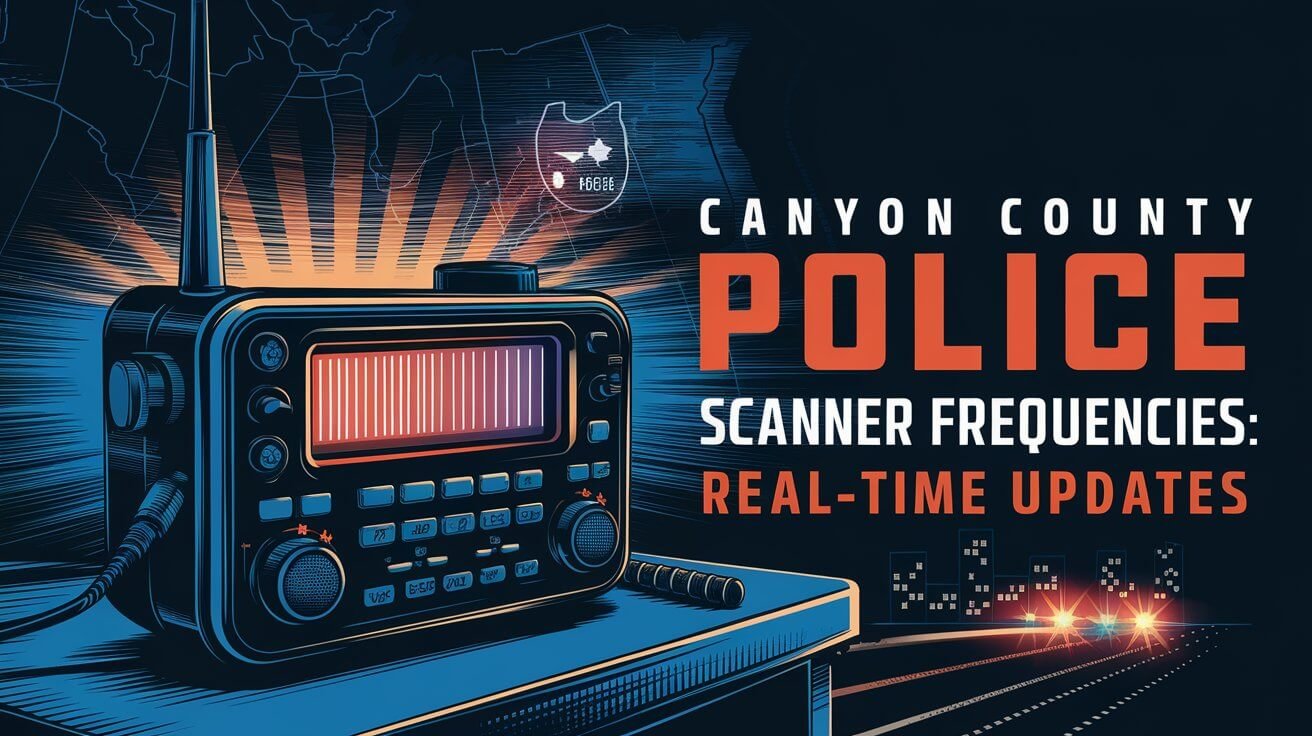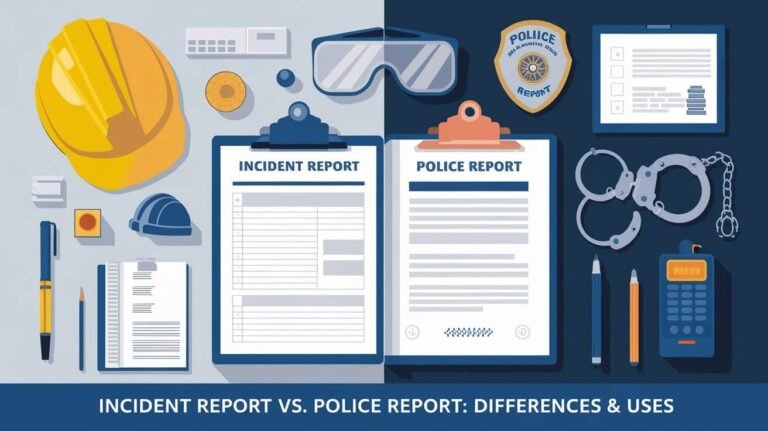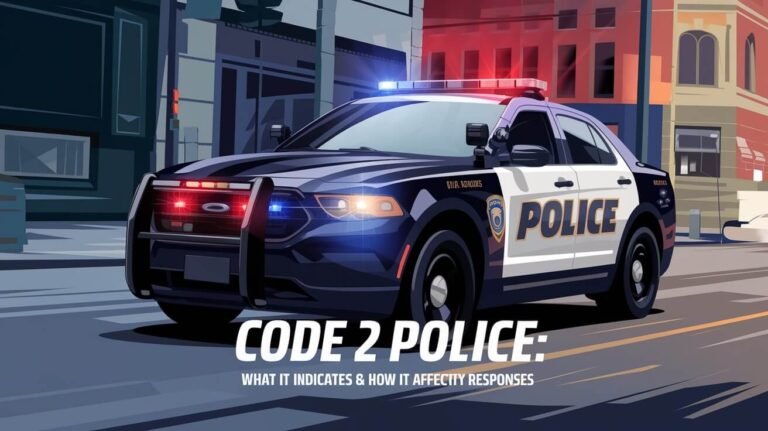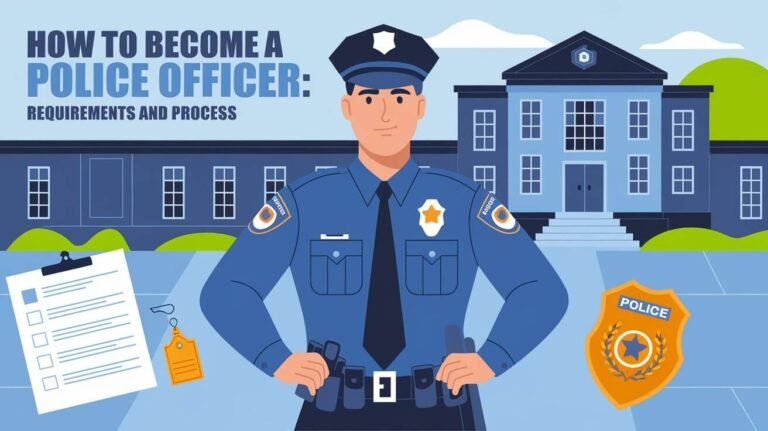Canyon County Police Scanner Frequencies: Real-Time Updates

For those interested in public safety in Canyon County, Idaho, knowing police scanner frequencies is key. The Canyon County Sheriff’s office and local police use certain frequencies for communication. There are 25 scanner frequencies listed for the county, ranging from 460.050 to 460.325 MHz for police dispatch.
This makes having a reliable police scanner important. It helps you stay informed about local public safety issues and Canyon County frequencies.
There are 5 police dispatch frequencies available. This means you can tune in to get updates on emergency responses and public safety announcements in Canyon County. These frequencies help residents stay informed and prepared for emergencies.
This shows how vital police scanner frequencies are in Canyon County.
Radio Equipment Requirements for Scanner Reception
To get Canyon County police scanner frequencies, you need the right radio gear. You can choose between digital and analog scanners. Digital scanners are better because they can catch more frequencies, like those from the Canyon County Sheriff’s office.
Choosing the right radio is key for good scanner reception. Look for digital scanners from brands like Uniden and Whistler. They have cool features like frequency scanning and storage. These help you tune into local law enforcement frequencies easily.
Digital vs Analog Scanner Models
Digital scanners are more popular because they catch more frequencies. They also sound better and are more efficient than analog scanners. For example, the Uniden Bearcat BR330 is great for catching local law enforcement frequencies.
Recommended Scanner Brands
Uniden and Whistler are top brands for scanners. They have many models, from simple analog scanners to advanced digital ones. These brands are known for quality and are favorites among scanner fans.
Essential Scanner Features
When picking a scanner, look for key features. These include frequency scanning, storage, and wide frequency coverage. Digital scanners with these can catch many frequencies, including local law enforcement ones.
Getting the right radio gear, like digital scanners from top brands, ensures clear reception. This way, you can stay updated on local news and events.
Canyon County Police Scanner Frequencies List
To keep up with local safety news in Canyon County, knowing the police scanner frequencies is key. The Canyon County list includes important frequencies like 460.3250 and 460.6000. These are used for dispatch and secondary talks.
Some important police scanner frequencies in Canyon County are:
- 460.3250 – Canyon County Sheriff (dispatch)
- 460.6000 – Canyon County Sheriff (secondary communications)
- 460.450 – Ada County Sheriff (primary)
- 453.300 – Boise Police Department Ch. A
These frequencies are vital for keeping an eye on local emergency services. They help you stay current with Canyon County’s public safety news. With this list, you can tune into these frequencies using a scanner. This way, you’ll know about local events and emergencies.
Remember, using police scanner frequencies is governed by the Federal Communications Commission (FCC). It’s important to follow local and federal rules. Also, the Canyon County list of police scanner frequencies might change. So, it’s important to keep up with any updates or changes to these frequencies.
Emergency Response Channel Distribution
In Canyon County, emergency response channels are spread across different agencies. These include the police department, fire department, and emergency medical services. Each agency has its own frequencies for dispatch and operations. Knowing these channels is key for a quick and effective response to emergencies.
The way these channels are set up helps emergency responders talk clearly and act fast. For example, the police use a modern 700 MHz Project 25 Digital Trunked Radio Network. This network has 8 Radio Sites and two Dispatch Centers, all connected to a central Master Site.
Police Department Channels
The police department’s channels are divided into:
- Dispatch frequencies: used for sending units to emergency scenes
- Tactical frequencies: for tactical operations, like SWAT teams and hostage situations
- Command frequencies: for managing emergency scenes
Fire Department Frequencies
The fire department’s channels include:
- Dispatch frequencies: for sending units to emergency scenes
- Operational frequencies: for talking during firefighting efforts
Emergency Medical Services Bands
The EMS channels are set up as follows:
- Dispatch frequencies: for sending units to emergency scenes
- Medical frequencies: for medical talks, like patient care coordination
Good emergency response needs a well-organized channel system. Knowing how emergency channels are distributed helps responders talk well and act fast. This saves lives.
| Agency | Frequency | Use |
|---|---|---|
| Police Department | 700 MHz | Dispatch and tactical operations |
| Fire Department | 800 MHz | Dispatch and operational communications |
| EMS | 900 MHz | Dispatch and medical communications |
Programming Your Scanner for Canyon County
To start using your scanner in Canyon County, you need to enter the right frequencies and set up scan lists. This is easy if you follow the steps well. Make sure your scanner works with Canyon County’s frequencies.
When programming your scanner, you’ll enter frequencies like 460.3250 and 460.6000. It’s important to check these frequencies are correct. This way, you’ll get the right communications. You can find Canyon County’s authorized frequencies online to help.
Here’s how to program your scanner:
- Choose the right scanner for your needs.
- Enter Canyon County’s frequencies, like those for law enforcement and fire.
- Set up scan lists to organize frequencies and get the communications you need.
Following these steps and using the right frequencies, you can program your scanner for Canyon County. This way, you’ll stay updated on local communications.
| Frequency | Agency | Use |
|---|---|---|
| 460.3250 | Law Enforcement | Dispatch |
| 460.6000 | Fire Department | Dispatch |
Don’t forget to update your scanner’s programming often. This ensures you have the latest frequencies for Canyon County.
Local Dispatch Centers and Operations
Canyon County’s local dispatch centers are key in emergency responses. The main center handles emergency calls. They work with other centers and mobile units for big incidents. Knowing how they work helps in quick emergency responses.
The centers use the Idaho Cooperative Agencies Wireless Interoperable Network (ICAWIN) on 700 MHz. This network helps different agencies talk smoothly. They also have UHF and VHF for backup, keeping communication going in tough times.
Main Dispatch Center Information
The main center in Canyon County deals with many emergencies. It gets support from other centers and mobile units. This team helps in big incidents.
Secondary Command Posts
Secondary command posts are backups for the main center. They help during big incidents. These posts have the right setup and people to keep things running.
Mobile Command Units
Mobile command units are special vehicles for emergency support. They have top-notch communication gear and skilled staff. They help coordinate and support in the field.
| Dispatch Center | Frequency | Mode | Tone |
|---|---|---|---|
| Main Dispatch Center | 700 MHz | ICAWIN | N/A |
| Secondary Command Post | UHF/VHF | FMN | Varies |
| Mobile Command Unit | 700 MHz | ICAWIN | N/A |
Canyon County’s dispatch centers are vital for emergency responses. They support police, fire, and medical emergencies. Understanding their roles shows how important they are for quick and effective responses.
Federal Agency Frequencies in Canyon County
In Canyon County, many federal agencies use specific frequencies for their talks. These frequencies help us know what’s happening with federal operations. The Idaho Cooperative Agencies Wireless Interoperable Network (ICAWIN) is a key system. It lets federal, state, and local agencies talk to each other in Idaho, including Canyon County.
Important frequencies in Canyon County include those for the FBI and DEA. While exact frequencies might not be shared, we can listen to general federal frequencies. This way, we can stay updated. Here’s a table showing some federal agency frequencies and their uses:
| Agency | Frequency | Use |
|---|---|---|
| FBI | 167.6125 MHz | Investigations and operations |
| DEA | 165.2875 MHz | Enforcement and surveillance |
| US Marshals | 162.9625 MHz | Prisoner transport and security |
It’s important to remember that frequencies can change based on the agency and location. In Canyon County, using a scanner can help us keep up with federal activities. Knowing about these frequencies shows how vital it is for agencies to communicate well in public safety and law enforcement.
Weather Alert Channels and Emergency Broadcasts
It’s important to know about severe weather and emergencies in Canyon County. Weather alert channels and emergency broadcasts help keep everyone safe. By watching these, people can protect themselves.
National Oceanic and Atmospheric Administration (NOAA) sends out warnings about bad weather. These alerts are key for getting ready and responding to emergencies. Emergency broadcasts also share vital info during crises.
NOAA Weather Radio Frequencies
NOAA weather radio frequencies are a must for severe weather updates. They give warnings and updates on weather, helping people prepare. Weather alert channels and emergency broadcasts help keep the community safe and informed.
Emergency Alert System Channels
Emergency alert system channels send out urgent messages during emergencies. They are vital for quick and clear info. By watching these channels, people can act fast to stay safe.
Some key facts about public safety feeds in the area are:
- 7 active public safety feeds
- 27 total listeners across all feeds
- 88% of feeds are currently online
These numbers show how important weather alert channels and emergency broadcasts are. They help keep the community safe and informed.
| Feed Type | Number of Feeds | Number of Listeners |
|---|---|---|
| Public Safety Feeds | 7 | 27 |
| Disaster Event Feeds | 6 | 2 |
| Marine NOAA Weather Radio Feeds | 2 | 2 |
Using weather alert channels and emergency broadcasts helps people stay safe. It’s important to keep an eye on these to know about severe weather and emergencies.
Scanner Coverage Maps for Canyon County
Knowing scanner coverage maps is key for those who want to listen to police scanner frequencies in Canyon County. These maps highlight areas with clear reception and dead zones. They are essential for keeping up with local public safety news in Canyon County.
To maximize your scanner’s use, understanding Canyon County’s scanner coverage maps is vital. This knowledge helps you find spots with strong signals and those with weak or no signals. By studying these maps, you can place your scanner for the best reception of police frequencies in Canyon County.
When looking at scanner coverage maps for Canyon County, consider these points:
- Frequency ranges: Coverage can change with frequency, with some areas better for certain frequencies.
- Geographic features: Terrain, buildings, and other features can impact signal strength, so they’re important to think about.
- Scanner type: Different scanners have different reception abilities, affecting how well they work with coverage maps.
Learning about scanner coverage maps in Canyon County, you can improve your scanner’s performance. This is true whether you live here or are just visiting. Reliable scanner coverage maps are a great tool for anyone.
| Area | Frequency Range | Reception Quality |
|---|---|---|
| Canyon County | 42.940 to 460.425 MHz | Good |
| Urban Areas | 155.505 MHz | Excellent |
| Rural Areas | 42.940 to 155.505 MHz | Fair |
Legal Guidelines for Scanner Use
In Canyon County, it’s important to know the legal rules for using scanners. These rules help keep emergency communications safe and public safety intact. Scanner use is regulated by both state and federal laws.
California Law Enforcement Mutual Aid Radio System (CALAW) oversees public safety radio bands in the state. CALAW sets aside channels for law enforcement to use. Agencies need permission from the California Office of Emergency Services (Cal OES) to use these channels. The CALAW plan has strict rules for scanner use, and breaking them can lead to losing permission.
State Regulations
Some key state rules include:
- Licensing fees for frequency coordination start at $100 per frequency, per location
- Agencies must get permission from Cal OES to use frequencies in mobile and portable radios
- Authority to transmit in emergencies is granted automatically and temporarily until the emergency ends
Federal Communications Commission Rules
The Federal Communications Commission (FCC) also has rules for scanner use. The FCC says scanner users must follow all laws and regulations, including those about privacy and interference. Users must also make sure their equipment is licensed and used as FCC rules say.
| Regulation | Description |
|---|---|
| CALAW | California Law Enforcement Mutual Aid Radio System |
| FCC | Federal Communications Commission |
| Cal OES | California Office of Emergency Services |
Following these legal guidelines, scanner users in Canyon County can help keep emergency communications safe. It’s key to know the rules and always use scanners as the law requires.
Interoperability Channels and Mutual Aid Frequencies
Effective emergency response in Canyon County depends on interoperability channels and mutual aid frequencies. These allow different agencies to talk to each other during emergencies. This ensures a coordinated response. It’s key to know about these for good emergency response.
In Canyon County, agencies use special channels to communicate. For example, the California Law Enforcement Mutual Aid Radio System (CLEMARS) uses 12 channels, growing to 13 after narrowbanding. Before, these channels were on 25 kHz wideband frequencies.
Some important stats on these channels and frequencies in Canyon County are:
- Total number of agencies/entities listed: 159
- Percentage of agencies using P25 Phase II AES-256 encryption: Approximately 83%
- Percentage of agencies using P25 AES-256 encryption (not specified as Phase II): Approximately 9%
- Percentage of agencies using OpenSky TDMA Digital encryption: Approximately 6%
Interoperability channels and mutual aid frequencies are key for good communication among emergency agencies. Knowing these frequencies helps agencies respond fast and well to emergencies. This can save lives.
| Agency | Interoperability Channel | Mutual Aid Frequency |
|---|---|---|
| California Highway Patrol | CHP-1 | 154.935 MHz |
| Local Fire Department | FD-1 | 153.935 MHz |
| Emergency Medical Services | EMS-1 | 155.235 MHz |
Interoperability channels and mutual aid frequencies are essential for emergency response in Canyon County. By using these, agencies can communicate well and work together. This improves public safety.
Troubleshooting Reception Issues
When you listen to police scanner frequencies, you might face reception problems. These issues can make it hard to keep up with local safety news. It’s important to fix these problems to get the latest updates without interruption.
There are many reasons for signal issues. They could be due to outside interference, faulty equipment, or wrong settings on your scanner. Finding the cause is the first step to solving the problem.
Start by checking your scanner’s antenna. Make sure it’s connected right and placed for the best signal. You might also try using a different radio or changing the scanner’s frequency. Solving these issues takes time and a careful approach.
Common Signal Problems
- Environmental interference from surrounding structures or obstacles
- Equipment malfunctions, such as faulty antennas or scanners
- Incorrect scanner programming or frequency settings
Reception Enhancement Tips
To get better reception, follow these tips. Keep your equipment in good shape and make sure your antenna is installed correctly. Also, stay updated on local frequency changes. These steps can help you get clearer signals and stay informed about public safety.
In Closing
Police scanner frequencies are key for staying informed about public safety in Canyon County. They help us understand what’s happening in our community. This article has covered how to use these frequencies and the right equipment.
Now, readers can set up their scanners to catch important frequencies. They can also fix any reception problems and follow the law. This way, we can all be ready for emergencies and help keep our neighborhoods safe.
Knowing about police scanner frequencies is useful for many people. It’s great for those in public safety, hobbyists, or just concerned citizens. By following this article, you can stay informed and help out in Canyon County’s public safety efforts.






